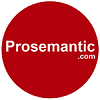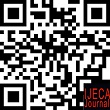Reading Handbook Development Based on TOEIC For Balikpapan State Polytechnic Students (Research and Development Study)
Abstract
This research aims to develop the existing reading handbook that is related to the students' needs and students’ English proficiency at Balikpapan State Polytechnic. The research method used research and development (R & D) for developing a supplementary existing reading handbook based on TOEIC. The R & D study is divided into 2 stages: (1) exploration stage, consisting of library research, document analysis, and needs analysis. Based on the findings of the exploration stage, it can be concluded that: (a) the students have difficulty in analyzing the question pattern of completion and error recognition; (b) the students do not master the vocabularies of TOEIC reading comprehension ;(c) the students do not familiar with the context of TOEIC reading text; (d) the students have difficulty to analyze the pattern of TOEIC reading comprehension question; and (2) development stage, consisting of numerous steps aimed at designing the supplementary existingreading handbook based on TOEIC : (a) designing prototype based on the result of exploration stage; (b) experts’ validation; (c) trying out the prototype; (d) final revision. The result shows that supplementary existing reading handbook based on TOEIC can help the students increase their TOEIC reading score and useful in their job field.
Keywords
Full Text:
DOWNLOAD [PDF]References
Borg, W. R., & Gall, M. D. (1983). Educational research: An introduction (4th ed). Longman.
Bresnihan, B. D. (2012). Using TOEIC Scores to Evaluate Student Performance in English Language Courses. Journal of Cultural Science, 47, 1–47.
Brown, H. D., & Abeywickrama, P. (2019). Language assessment: Principles and classroom practices (Third edition). Pearson Education.
Cohen, A. D. (2006). The Coming of Age of Research on Test-Taking Strategies. Language Assessment Quarterly, 3(4), 307–331. https://doi.org/10.1080/15434300701333129
Daza, C., & Suzuki, M. (2004). A Review of the Reading Section of the TOEIC. TESL Canada Journal, 22(1), 16. https://doi.org/10.18806/tesl.v22i1.163
Educational Testing Services. (2005). ETS TOEIC Examinee Handbook. Princeton. https://www.ets.org/s/toeic/pdf/listening-reading-examinee-handbook.pdf
Educational Testing Services. (2015). ETS Examinee Handbook. Princeton. https://www.ets.org/s/toeic/pdf/listening-reading-examinee-handbook.pdf
Educational Testing Services. (2016). TOEIC Test Sample. Princeton. https://www.ets.org/s/toeic/pdf/toeic-listening-reading-sample-test-updated.pdf
Ellis, M., & Johnson, C. (2007). Teaching business English (7. impr). Oxford Univ. Pr.
Fauziati, E. (2016). Analisis Pertanyaan Pada Butir Soal Reading Comprehension Pada Test TOEIC. Jurnal Penelitian Humaniora, 17(1), 9. https://doi.org/10.23917/humaniora.v17i1.2347
Imsa-ard, P. (2019). TOEIC Reading Section: The Evaluation of the Four Cardinal Criteria for Testing a Test. NIDA Journal of Language and Communication 24 (36), 91-110., 24(36), 91–110.
Keenan, J. M., Betjemann, R. S., & Olson, R. K. (2008). Reading Comprehension Tests Vary in the Skills They Assess: Differential Dependence on Decoding and Oral Comprehension. Scientific Studies of Reading, 12(3), 281–300. https://doi.org/10.1080/10888430802132279
Liu, J. (2013). The Relationship Among TOEIC® Listening, Reading, Speaking, and Writing Skills. ETS.
Miles, M. B., Huberman, A. M., & Saldaña, J. (2014). Qualitative data analysis: A methods sourcebook (Third edition). SAGE Publications, Inc.
Nuttall, C. E. (1982). Teaching reading skills in a foreign language. Heinemann Educational Books.
Oliveri, M. E., & Tannenbaum, R. J. (2017). Insights Into Using TOEIC ® Test Scores to Inform Human Resource Management Decisions: Informing HR Decisions With TOEIC ® Scores. ETS Research Report Series, 2017(1), 1–7. https://doi.org/10.1002/ets2.12177
Powers, D. E., & Powers, A. (2015). The incremental contribution of TOEIC® Listening, Reading, Speaking, and Writing tests to predicting performance on real-life English language tasks. Language Testing, 32(2), 151–167. https://doi.org/10.1177/0265532214551855
Ridge, E. (2011). Keiko Koda. 2005. Insights into Second Language Reading: A Cross-Linguistic Approach. Cambridge University Press. Per Linguam, 24(2). https://doi.org/10.5785/24-2-46
Saaristo, P. (2015). Grammar is the heart of language: Grammar and its role in language learning among Finnish university students. In J. Jalkanen, E. Jokinen, & P. Taalas (Eds.), Voices of pedagogical development – Expanding, enhancing and exploring higher education language learning (pp. 279–318). Research-publishing.net. https://doi.org/10.14705/rpnet.2015.000296
Tokunaga, M. (2008). Evaluation of the TOEIC Test Preparation Class At Konan University. 7, 41–55.
Trew, G. (2006). Tactics for TOEIC® Speaking and Writing Tests Pack. Oxford University Press. http://hdl.handle.net/123456789/1226
Yi-Ching, Pan. (2010). Enhancing Students’ Communicative Competency and Test-Taking Skills Through TOEIC Preparatory Materials. TESOL Journal, 3, 81–91.
DOI: https://doi.org/10.31764/ijeca.v4i3.5553
Refbacks
- There are currently no refbacks.
Copyright (c) 2021 Elisabeth Milaningrum, Masrul Huda

This work is licensed under a Creative Commons Attribution-ShareAlike 4.0 International License.
IJECA (International Journal of Education and Curriculum Application) already indexed:










___________________________________________________________________
| |
____________________________________________________________________
IJECA Publisher Office:







.jpg)




